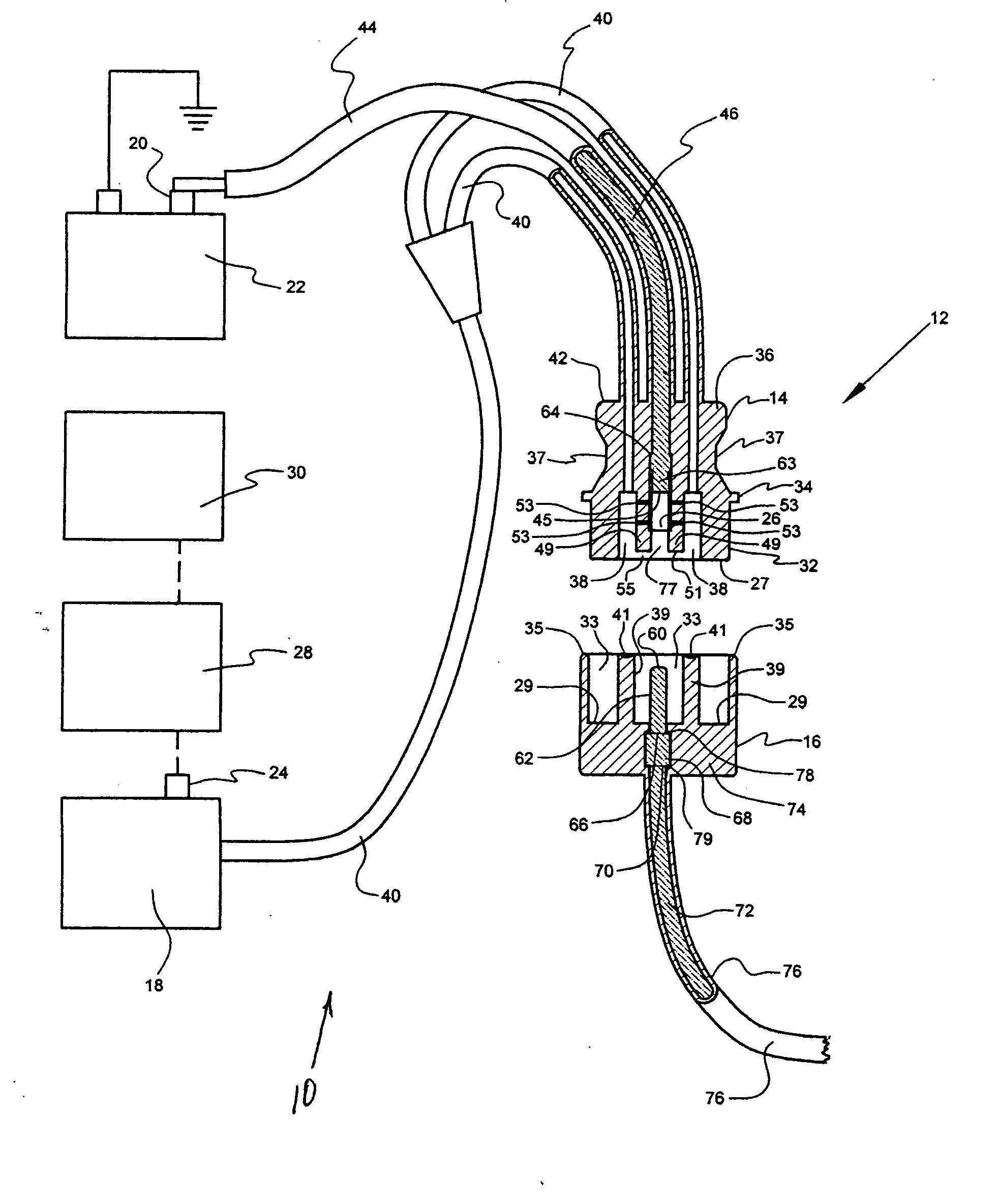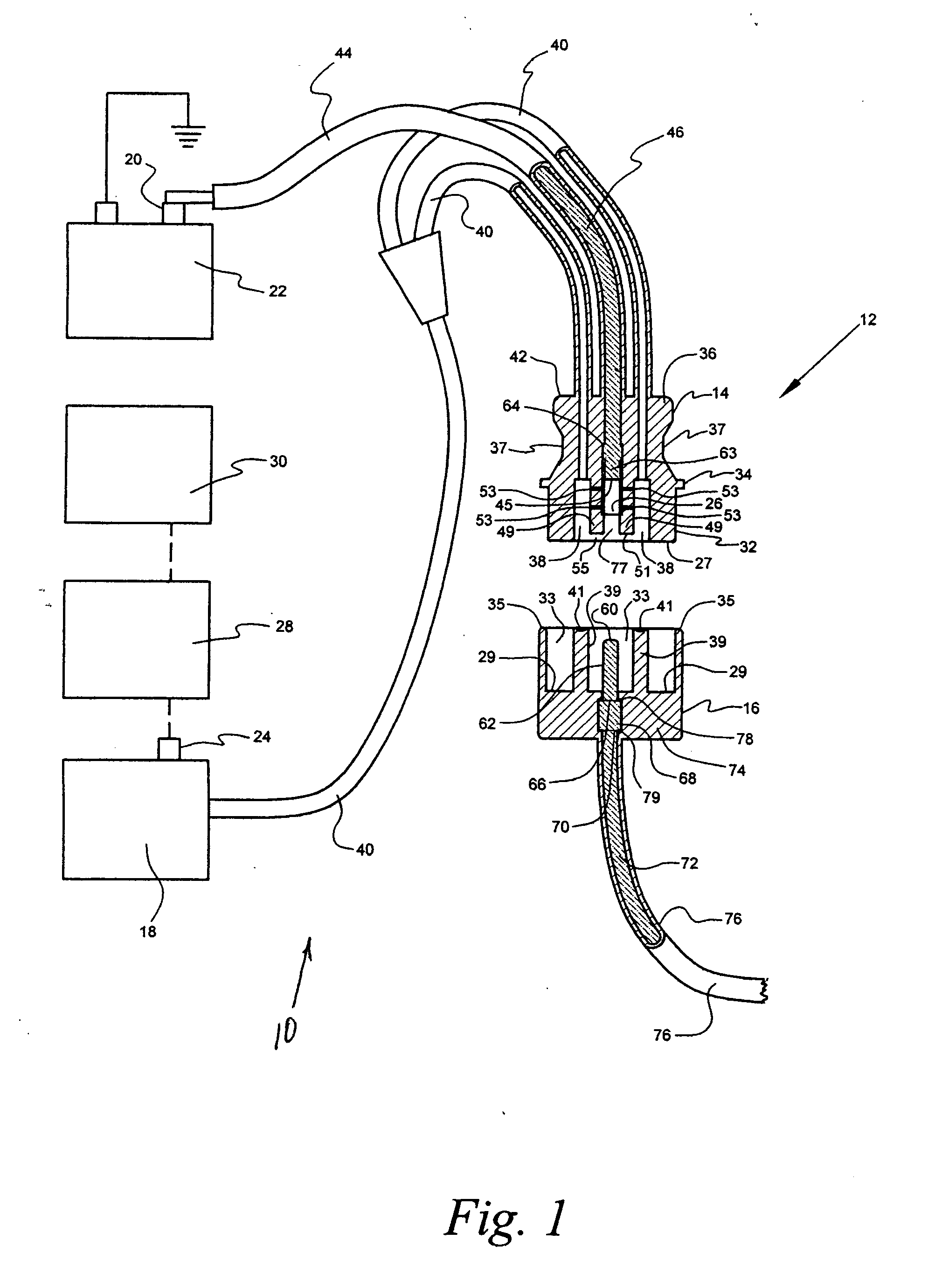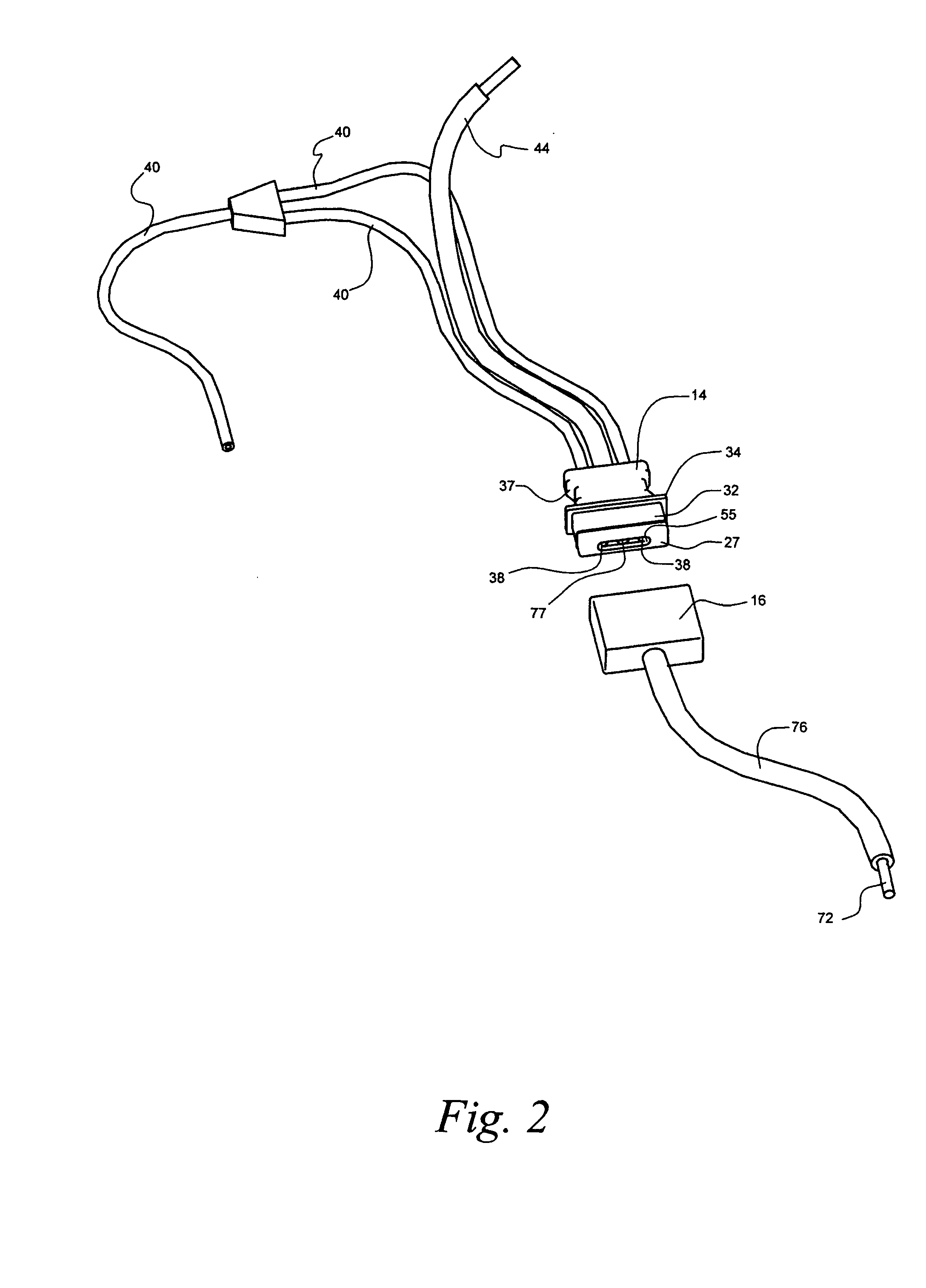System and method for reducing the chance of fires and/or explosions
a technology of electrical arc and fire, applied in the direction of electrical devices, anti-theft devices, coupling device connections, etc., can solve the problems of not using the pressure of inert gas in the prior art system or method, not maintaining power to safety electrical equipment, and not using a single system or method. , to achieve the effect of increasing the force, and reducing the possibility of fire starting
- Summary
- Abstract
- Description
- Claims
- Application Information
AI Technical Summary
Benefits of technology
Problems solved by technology
Method used
Image
Examples
Embodiment Construction
[0029] Referring now to the drawings, a system for reducing the possibility of fire and / or explosion when a vehicle impacts an object in accordance with the present invention is denoted as numeral 10. The system 10 includes a connector 12 having a first portion 14 connected to an ungrounded terminal 20 of a typical vehicle battery 22 or similar electrical power source for a vehicle (not depicted), and a second portion 16 connected to all vehicle electrical components requiring power from the power source 22; one or more inert gas canister 18 having an internal pressure that facilitates the separation of the first and second portions 14 and 16 of the connector 12 and that blankets an area adjacent to the connector 12 with inert gas when predetermined conditions are satisfied. The first portion 14 is connected to the ungrounded terminal 20 of a battery 22 in the vehicle.
[0030] The system 10 further includes electric squib means 24 for initiating pressurized inert gas flow from the ca...
PUM
 Login to View More
Login to View More Abstract
Description
Claims
Application Information
 Login to View More
Login to View More - R&D
- Intellectual Property
- Life Sciences
- Materials
- Tech Scout
- Unparalleled Data Quality
- Higher Quality Content
- 60% Fewer Hallucinations
Browse by: Latest US Patents, China's latest patents, Technical Efficacy Thesaurus, Application Domain, Technology Topic, Popular Technical Reports.
© 2025 PatSnap. All rights reserved.Legal|Privacy policy|Modern Slavery Act Transparency Statement|Sitemap|About US| Contact US: help@patsnap.com



